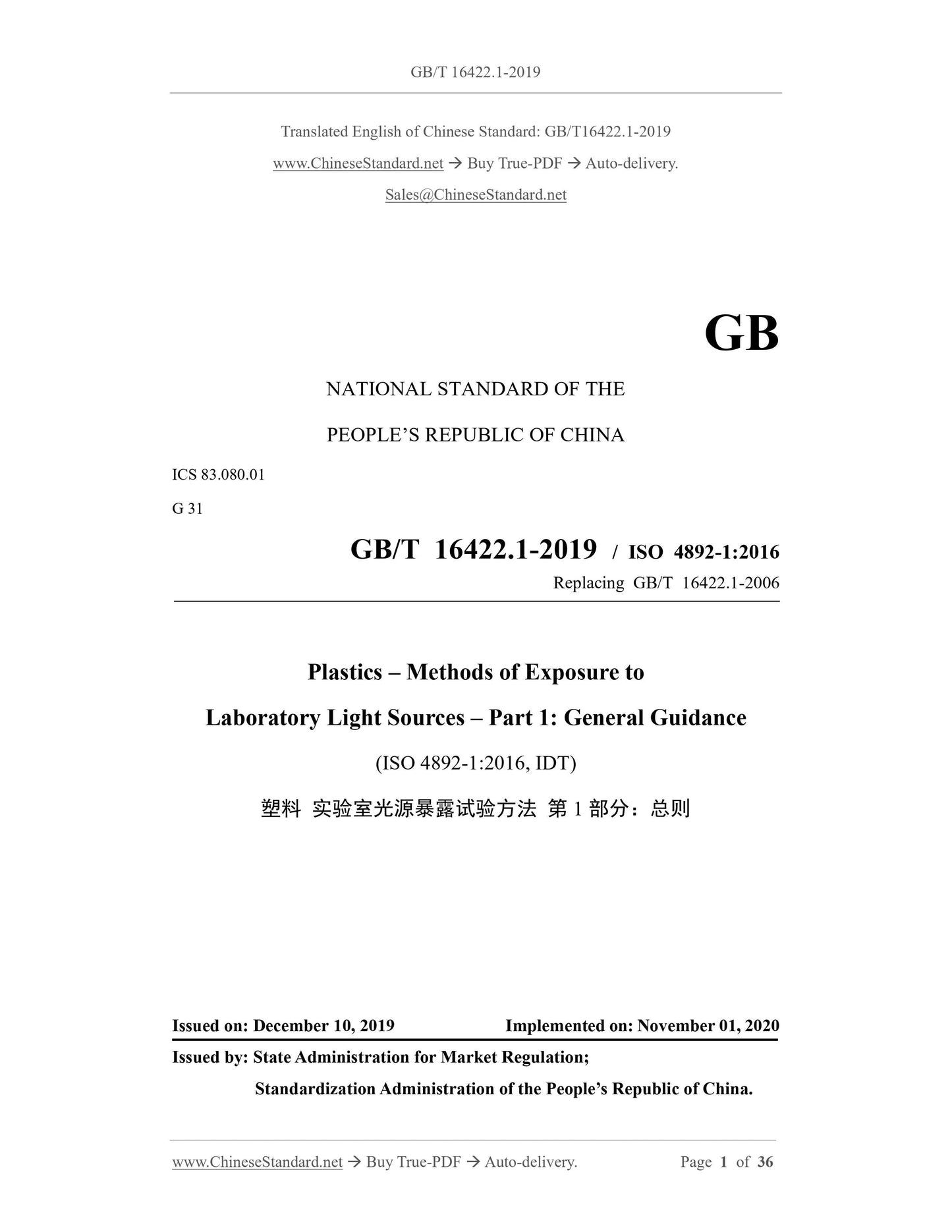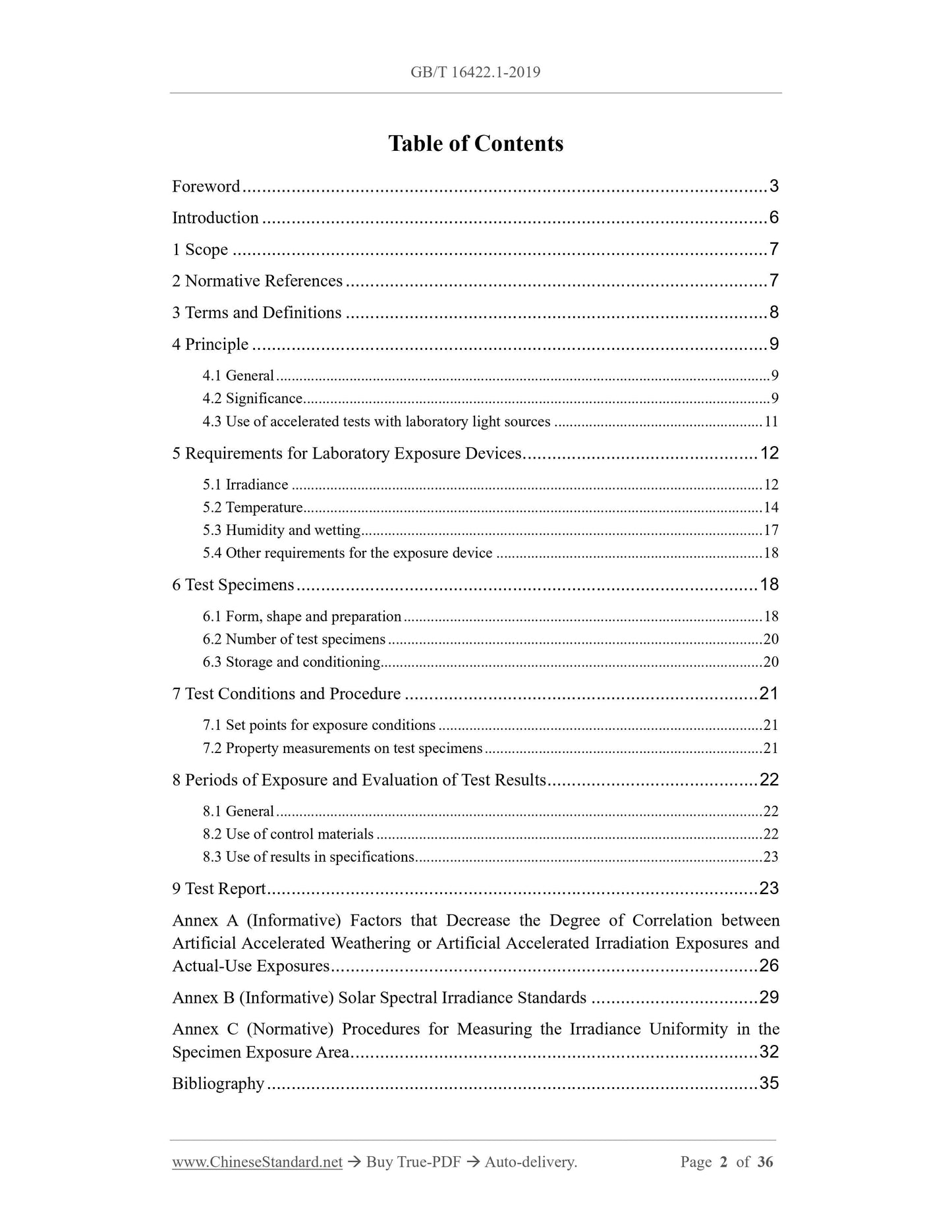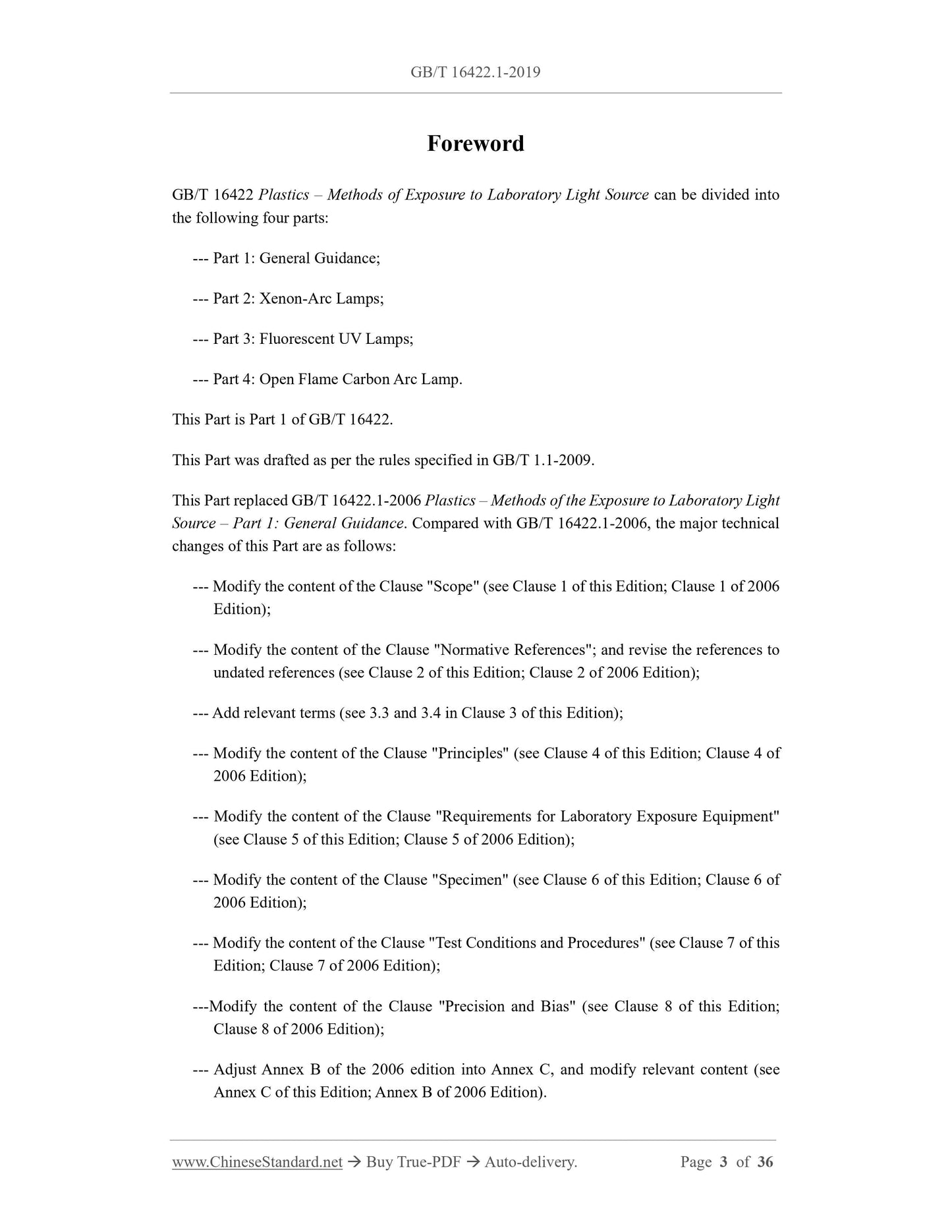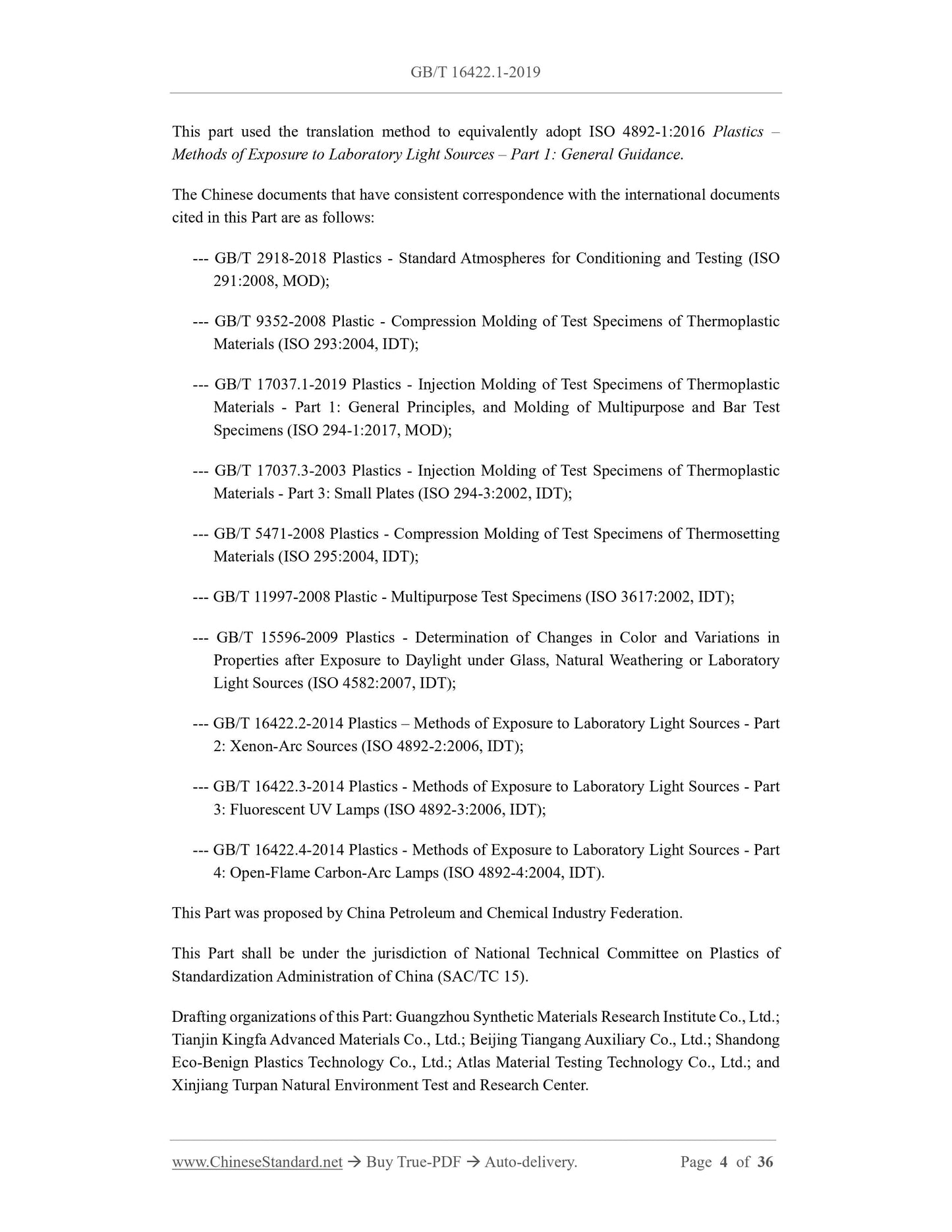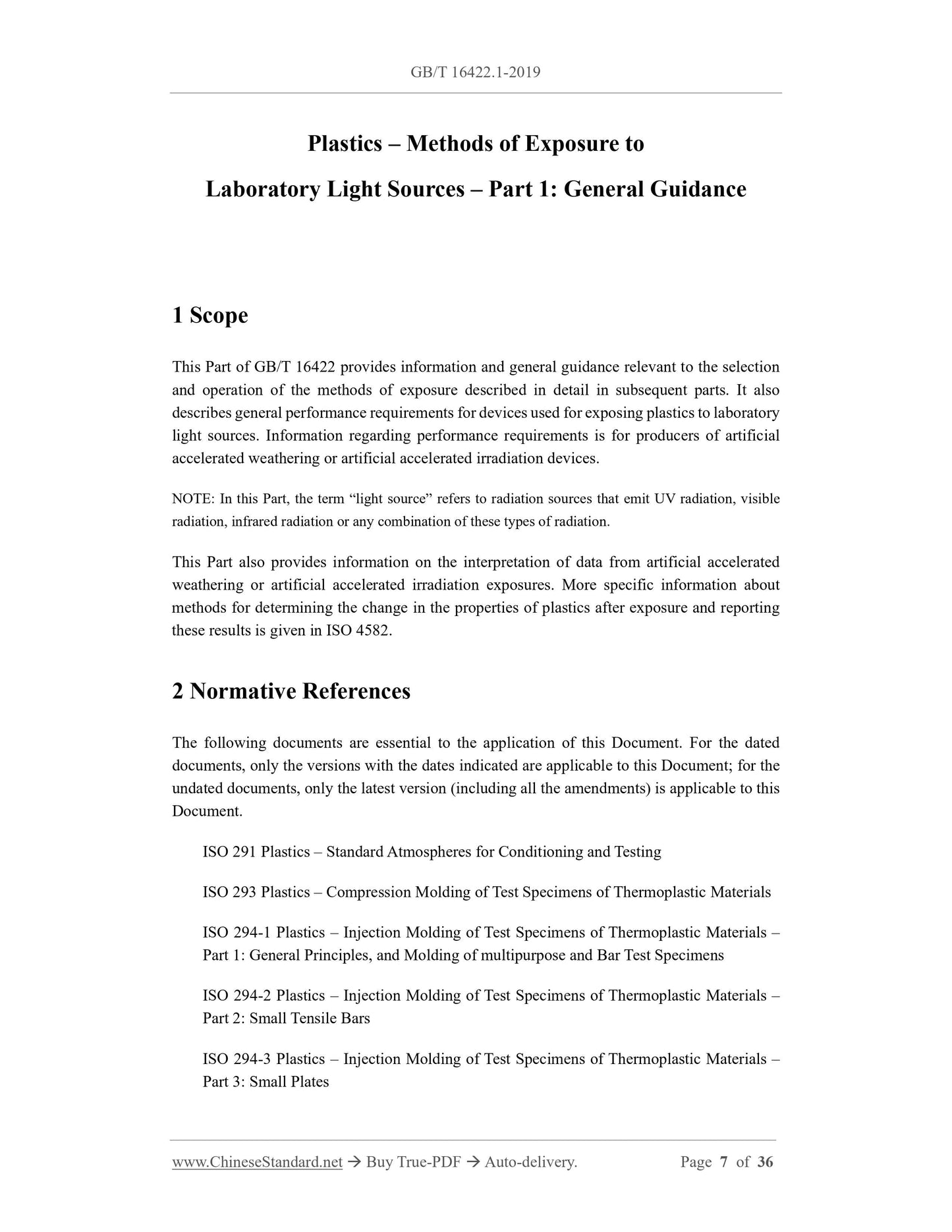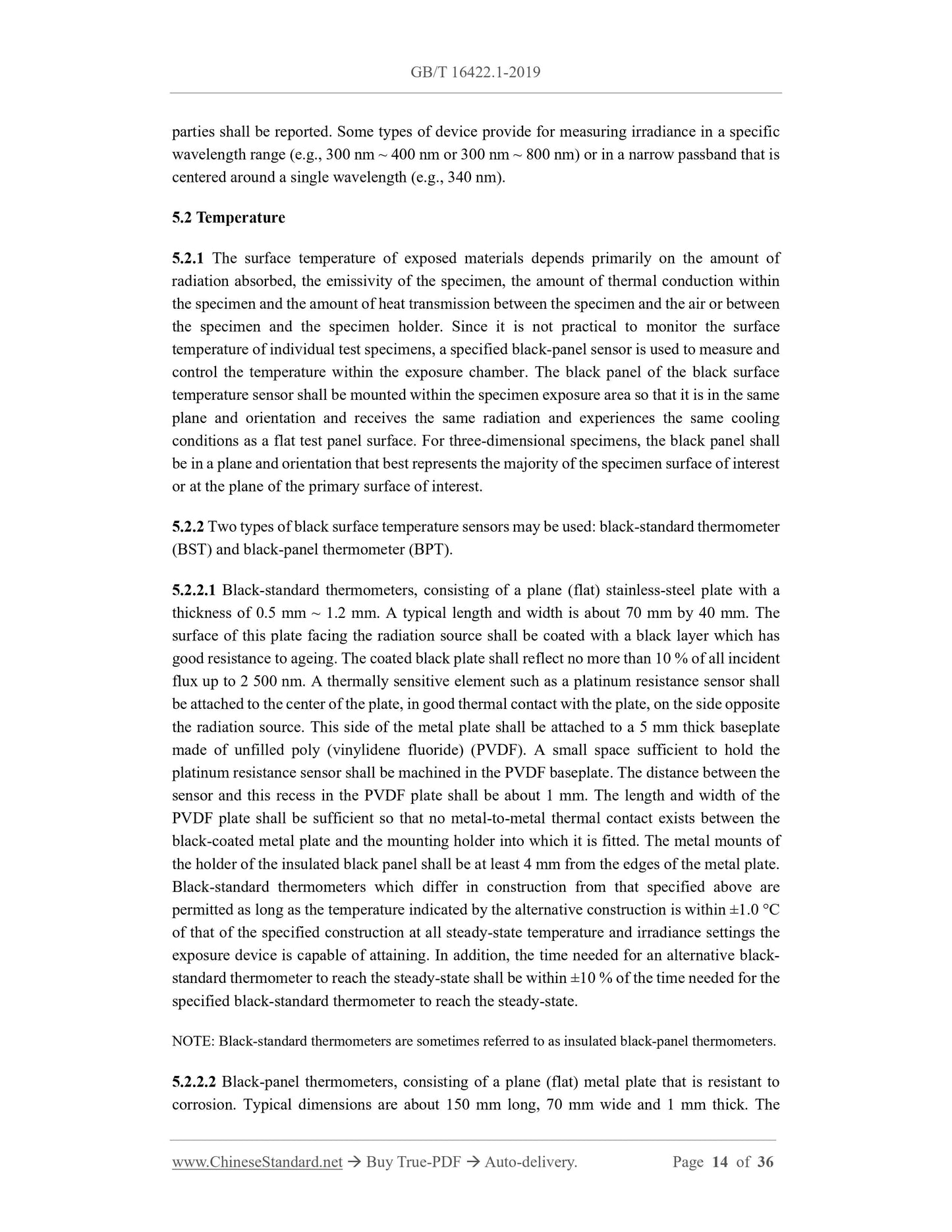1
/
of
6
www.ChineseStandard.us -- Field Test Asia Pte. Ltd.
GB/T 16422.1-2019 English PDF (GB/T16422.1-2019)
GB/T 16422.1-2019 English PDF (GB/T16422.1-2019)
Regular price
$420.00
Regular price
Sale price
$420.00
Unit price
/
per
Shipping calculated at checkout.
Couldn't load pickup availability
GB/T 16422.1-2019: Plastics -- Methods of exposure to laboratory light sources -- Part 1: General guidance
Delivery: 9 seconds. Download (and Email) true-PDF + Invoice.Get Quotation: Click GB/T 16422.1-2019 (Self-service in 1-minute)
Newer / historical versions: GB/T 16422.1-2019
Preview True-PDF
Scope
This Part of GB/T 16422 provides information and general guidance relevant to the selectionand operation of the methods of exposure described in detail in subsequent parts. It also
describes general performance requirements for devices used for exposing plastics to laboratory
light sources. Information regarding performance requirements is for producers of artificial
accelerated weathering or artificial accelerated irradiation devices.
NOTE: In this Part, the term “light source” refers to radiation sources that emit UV radiation, visible
radiation, infrared radiation or any combination of these types of radiation.
This Part also provides information on the interpretation of data from artificial accelerated
weathering or artificial accelerated irradiation exposures. More specific information about
methods for determining the change in the properties of plastics after exposure and reporting
these results is given in ISO 4582.
Basic Data
| Standard ID | GB/T 16422.1-2019 (GB/T16422.1-2019) |
| Description (Translated English) | Plastics -- Methods of exposure to laboratory light sources -- Part 1: General guidance |
| Sector / Industry | National Standard (Recommended) |
| Classification of Chinese Standard | G31 |
| Classification of International Standard | 83.080.01 |
| Word Count Estimation | 26,234 |
| Date of Issue | 2019-12-10 |
| Date of Implementation | 2020-11-01 |
| Issuing agency(ies) | State Administration for Market Regulation, China National Standardization Administration |
Share
